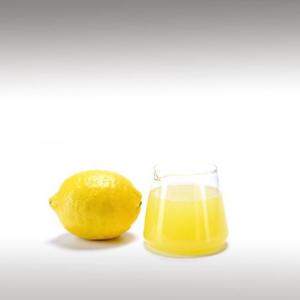
LEMON JUICE (CITRUS LIMON) - INGREDIENTS

BASE / GENERAL DATA
Information submited: February 6, 2015 Modified: May 30, 2018 By: OperaDreamhouse
The Lemon (Citrus Limon) is a small evergreen tree native to Asia. The tree's ellipsoidal yellow fruit is used for culinary and non-culinary purposes throughout the world, primarily for its juice, though the pulp and rind (zest) are also used in cooking and baking. The Juice of the Lemon is about 5% to 6% citric acid, which gives Lemons a sour taste. The distinctive sour taste of Lemon Juice makes it a key ingredient in drinks and foods such as lemonade and lemon meringue pie.
The first substantial cultivation of Lemons in Europe began in Genoa in the middle of the 15th century.The lemon was later introduced to the Americas in 1493 when Christopher Columbus brought Lemon seeds to Hispaniola on his voyages. Spanish conquest throughout the New World helped spread Lemon seeds.
The origin of the word "lemon" may be Middle Eastern. One of its earliest occurrences appears in a Middle English customs document of 1420–1421.
In 1747, James Lind's experiments on seamen suffering from scurvy involved adding Lemon juice to their diets, though Vitamin C was not yet known.
Lemon Juice is also used as a short-term preservative on certain foods that tend to oxidize and turn brown after being sliced (enzymatic browning), such as Apples, Bananas, and Avocados, where its acid denatures the enzymes.
The Juice of the Lemon may be used for cleaning. A halved Lemon dipped in Salt or Baking Powder is used to brighten copper cookware. The acid dissolves the tarnish and the abrasives assist the cleaning.
The first substantial cultivation of Lemons in Europe began in Genoa in the middle of the 15th century.The lemon was later introduced to the Americas in 1493 when Christopher Columbus brought Lemon seeds to Hispaniola on his voyages. Spanish conquest throughout the New World helped spread Lemon seeds.
The origin of the word "lemon" may be Middle Eastern. One of its earliest occurrences appears in a Middle English customs document of 1420–1421.
In 1747, James Lind's experiments on seamen suffering from scurvy involved adding Lemon juice to their diets, though Vitamin C was not yet known.
Lemon Juice is also used as a short-term preservative on certain foods that tend to oxidize and turn brown after being sliced (enzymatic browning), such as Apples, Bananas, and Avocados, where its acid denatures the enzymes.
The Juice of the Lemon may be used for cleaning. A halved Lemon dipped in Salt or Baking Powder is used to brighten copper cookware. The acid dissolves the tarnish and the abrasives assist the cleaning.

SPIRITUAL PRACTISES DATA

MEDICINE / HEALTH DATA

BEAUTY / COSMETICS DATA

FOOD / COOKING DATA
COMMENTS
No comments.
Newest mixtures containing Lemon Juice (Citrus Limon):

Daily metabolism-boosting immune drink
May 19, 2015

Raw white chocolate with coconut cream
February 18, 2015

Simple lemon and olive oil salad dressing
February 18, 2015

Silky summer legs scrub
February 6, 2015


